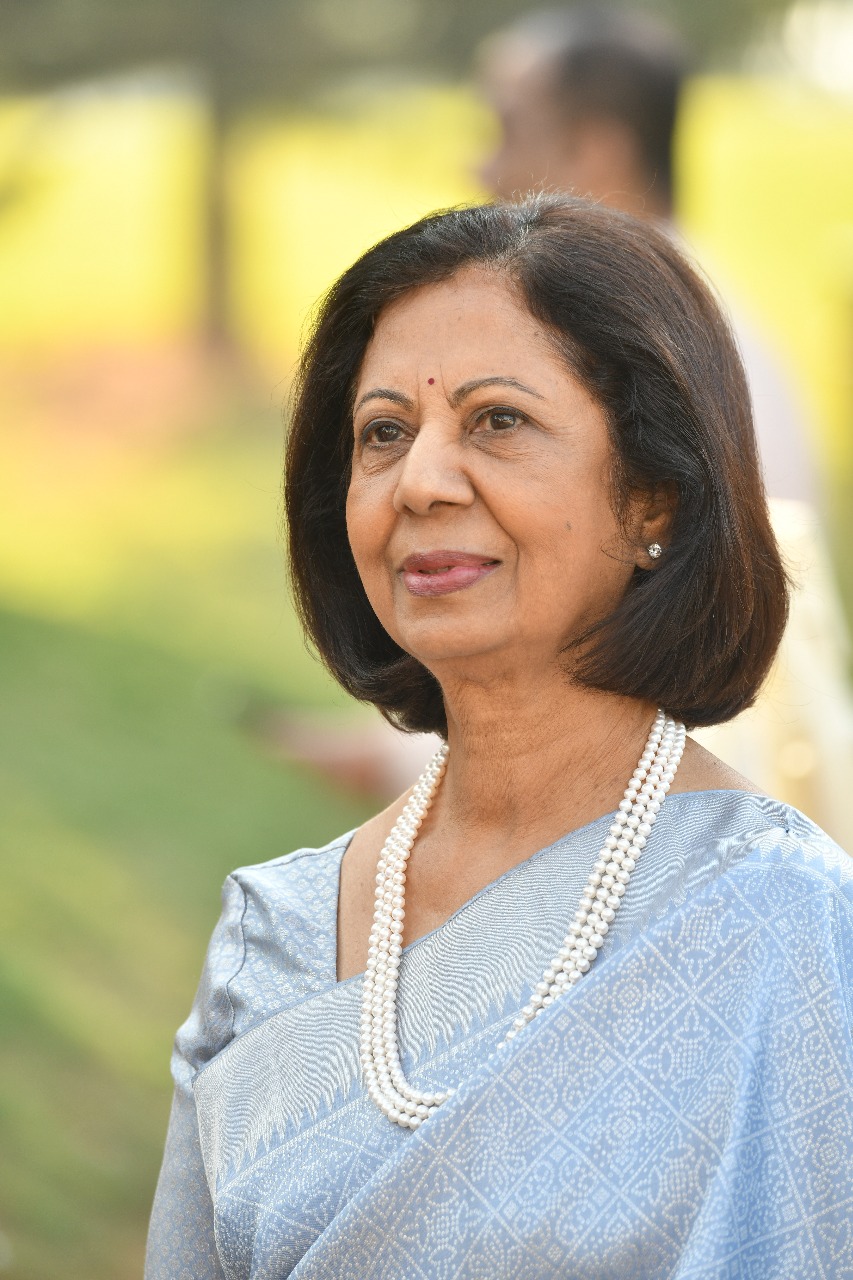Mrs.Sabitha Chandran

Mrs Sabitha Chandran has been associated with CCTN since its inception in 1988.
She along with a few other members helped form the Rules for CCTN and had it registered. The dynamism, commitment and energy Mrs Sabitha Chandran and the founder members of CCTN had, has been an inspiration for the members in the years to follow.
During the early years in CCTN, Mrs Sabitha Chandran was in charge of initiating craft classes in schools. She was also one of the key members who coordinated with DCH (Development Commissioner of Handicrafts) and helped set up a carpet weaving centre for Kurumbas of Kalangal. Sheep were reared by the local people for their wool. The women spun the wool into coarse blankets that were popular as they were very warm, but due to its coarseness it did not fetch a high price. The CCTN team helped the blanket 'Kurumba Kambili' weavers of Kalangal to upgrade their products. With the help of DCH, CCTN helped set up looms in the village and the women were taught to spin and weave finer blankets. Subsequently with the help of CCAP, these blankets were then printed by Kalamkari artisans, to add value.
Mrs Sabitha Chandran worked on developing new avenues to use the art of Tanjore mirror work craft. Modern designs were developed and executed. Picture frames and Trays were made for the Craft exhibition Kamala'92.
As the Convenor of the 1993 National meet in Coimbatore, Mrs Sabitha Chandran led the team which organised a fashion show which was in 3 categories - Rural scene (rural costumes from 4 southern states), Saree Ceremony, and a modern fashion show. On the occasion of the National meet, CCTN organised a special exhibition 'Attic Allure' bringing together rare utilitarian products from private houses in Coimbatore. The exhibition also provided an opportunity for the city public to join in a celebration of craft.
Being a Textile Designer, Mrs Sabitha Chandran helped promote Negamam cotton saree weavers and encouraged them to look at newer products to suit the present day trends. This project was called 'Heritage Weaves'. CCTN sponsored jacquard looms and gave them designs. They produced beautiful, floor cushions, table runners and table mats. It was showcased at the annual exhibition Kamala'94 and received a great deal of appreciation. The weavers were introduced to new ways to take their products forward. For Kamala'94 in Bangalore, two products namely Nuwud articles and handloom tapestry were confirmed as the products for export from Tamil Nadu.
Along with two other members, Mrs Sabitha Chandran made multiple trips to Bhavani to connect with the traditional cotton Bhavani Jamakkalam (carpet) weavers. New designs and colours were suggested to them to suit the present day market. They were also encouraged to weave bags and Dhurries.
The first craft exhibition from various states was organised by CCTN at this time. This over the years has evolved into our Annual Crafts Bazaar, and Srishti.
Mrs Sabitha Chandran was the Convenor for the 'Vasthra Parambara' Exhibition in 1995 - an exhibition where antique textiles, artefacts and household articles depicting the lives of people, from rural folk to Zamindars, was exhibited. It was a 3 day exhibition which to this day is unmatched in terms of the quality of the exhibits. CCTN had organised for display, an ivory palanquin, a horse drawn chariot, antique zardozi coats worn by zamindars, rare Kancheepuram and Benares textiles, brass articles used in rural households, silver, brass and copper vessels used during religious occasions. There was also an exhibition of antique jewellery to represent the lifestyle of Coimbatore, pre and post independence era.
During her tenure as President CCTN, Mrs Sabitha Chandran headed the craft revival initiative of CCI, where a group of Nomads(Lambadi) near Mettur were going to give up their traditional embroidery and craft.
Jute being a very popular product, Mrs Sabitha Chandran with her pioneering vision looked at possibilities of developing jute products for Kamala'97. Jute dolls were taken for the exhibition, and were well appreciated.
A Documentation of old brass and copper vessels and utensils used by households for religious rituals was made by CCTN, guided by Mrs Jaya Meenakshi Sundaram. Mrs Sabitha Chandran along with Mrs Saranya Ramkumar and other members visited Palani and other nearby areas to identify, photograph, and document these articles. The resultant book, 'Functional Aesthetics' came into existence in 1998.
Establishment of CCTN's Textile exhibition of antique textiles and artefacts at the Kasthuri Srinivasan Textile Museum in the year 1998 was the highlight of Mrs Sabitha Chandran's year as President. A room at the museum was allotted to CCTN, and with the help of architects Vivek and Jayashree, Mrs Sabitha Chandran designed and executed the project. She was the brain behind the aesthetically organised and meticulously planned exhibits with the help of Mrs Sujani Balu and a few other committee members. To this day the display is appreciated by all who visit the museum.
The most gratifying moment for Mrs Sabitha Chandran was when CCTN got its own permanent office space.
Mrs Sabitha Chandran spearheaded two separate floral demonstrations and workshops by renowned Thai floral artists Sakul Intakul and Phubast Chesdmethee. Local florists were taught the intricate designs of the famous Thai floral art over a two day workshop. This workshop helped our local florists who are recognised as leading wedding floral decorators.
Mrs Sabitha Chandran urges members to work closely with local artisans, and help them innovate and upgrade their craft skills. The members should use the technology they have access to, and help the artisans to blend traditional skills with modern day trends and lifestyles, to keep ancient traditions alive and relevant.
Mrs Sabitha Chandran has been passionate about the vision and mission of CCTN and we at CCTN are truly grateful for her leadership, which inspired action and significantly raised individual and team performance over the years.
